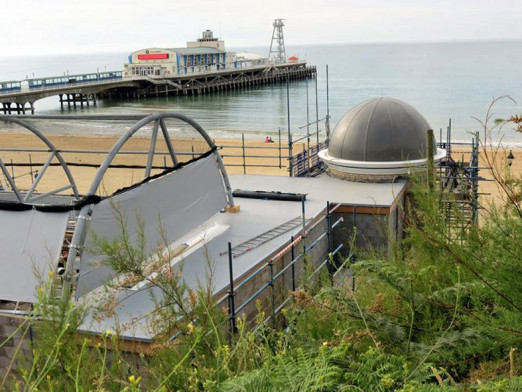Typically the buildings we develop have big, flat elevations and when coupled with a flat roofs, physics come into play. SIG Design & Technology look at the effects of wind uplift on roofs and how to avoid it becoming an issue.
What is wind uplift?
The wind can approach a building from any direction. It will hit a side elevation, causing it to be directed upwards and accelerated. Once it reaches the top of the building it can return to its normal course, however it leaves a void before settling back down over the roof. This void is an area of negative pressure – which has the effect of trying to pull or suck the roof coverings off the remaining structure. This uplift effect is the same force that lifts an aircraft wing.
Where is wind uplift on roofs an issue?
The edge zone of a roof is the most likely to be affected by wind uplift. As the wind can come from any direction, all corner and perimeter zones require a greater resistance to the effects of wind load when being secured. The effect can be worsened if the edges of flat roofs are not correctly fixed, which can allow air to get underneath the roof covering.
It is also important to take into account the location and exposure of the building to determine the effect of wind uplift. Northern England, Scotland & Northern Ireland typically will have much higher average wind speeds than those experienced in the South & South East.
Wind speed will also be higher in exposed areas such as on the coast and in open, rural or hilly areas. Tall buildings with no surrounding protection would be more at risk; buildings that are sheltered in a town centre less so.
Wind load calculations help design out problems with wind uplift on roofs
A roof can lift in negative pressure zones. By using a wind load calculation we can ensure that we have sufficient fixings in place to ensure that the wind cannot lift the membrane and the roof does not get damaged.
Even with a wind load calculation it would still be possible to see a loose laid waterproofing covering, such as mechanically fastened single ply membrane lift slightly on a windy day, however there are safety factors built in to both wind load calculations & the pull out strength figures used for fixings. By the way, should you be on the roof on a windy day? Probably not. Remember to take the correct health and safety precautions.
If your membrane is to be adhered to the roof (an adhered roof), a wind load calculation really should still be carried out, to ensure that all the components used in the roof build up are capable of withstanding the forces. You can have the best membrane, vapour control layer, glue etc in the world, but if the insulation board facing pulls off at a low value, then this will be the weakest link.
SIG Design & Technology are able to offer wind load calculations for all of our products for our customers, clients and specifiers.






